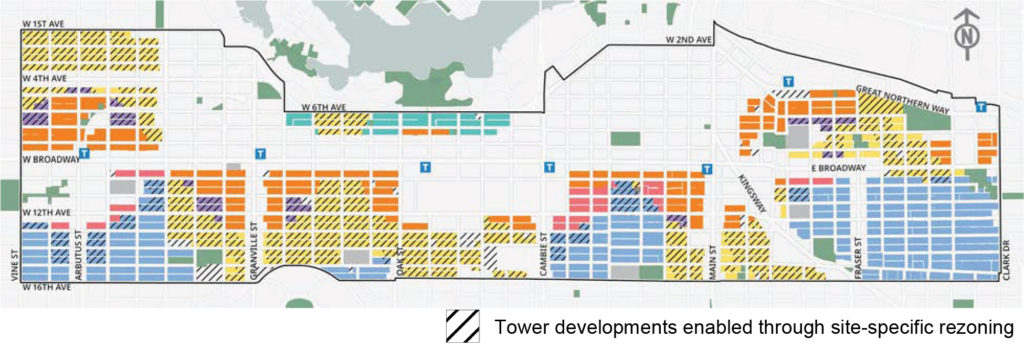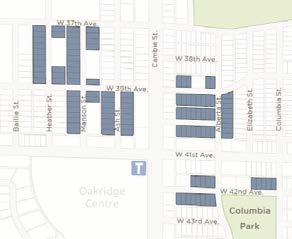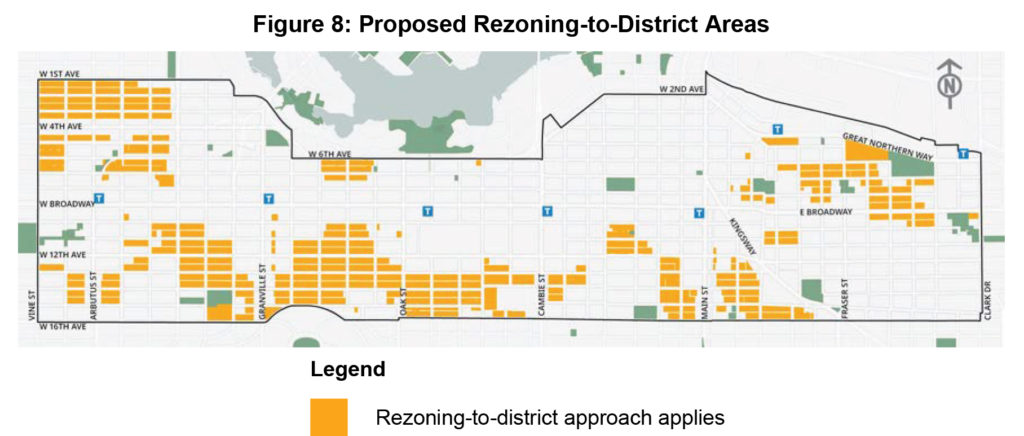Broadway and Cambie Plan Pre-Zoning: A “Streamlined” System Full of Complexity and Nuance

New zoning is here, but “simple” is still a four-letter word.
The City of Vancouver has approved significant pre-zoning for parts of the Broadway Plan and the Cambie Corridor Plan, applying new standardized apartment zoning districts that will eliminate the need to put every project through a lengthy and uncertain site-specific rezoning.
It’s a welcome, common-sense change. There is no reason to demand lengthy rezonings on projects that fully meet the criteria in a community plan that has already gone through years of consultation and been adopted by Council. But the outcome here is more nuanced than it first appears. The system is still complex and layered: some properties were under-zoned and will need further rezoning to match the community plan’s potential, while others present so many options they require a deep-learning algorithm to find a path forward. Rather than just simplify the system, the City seems to have squished years of overlapping policy together. It’s a good first step, but if the goal is to streamline the system and unlock more housing supply, more can and should be done.
A look at the details
Within the Broadway Plan, this week’s pre-zoning applies to low-density residential and existing apartment areas; it excludes mixed-use areas along Broadway and the major north-south arterials (Arbutus, Burrard, Granville, Main, Fraser).

Disappointingly, the majority of apartment districts in South Granville / Fairview, Kitsilano, and pockets of Mount Pleasant where towers are permitted under the Broadway Plan were instead given a low-rise R3 zone. Towers will still be allowed, but this will require further site-specific rezoning so that City Hall can enforce limitations such as the two-tower-per-block rule and shadowing restrictions. On the positive side, these tower rezonings will follow a streamlined “rezoning-to-district” approach, allowing developers to select one of the newly adopted apartment districts rather than a bespoke CD-1 zone.
While it will be easier to build low-rise with no rezoning, there are as many as four different combinations of height and density that need to be considered, all carrying different frontage and below-market requirements. What’s more, the viability of these lower-density forms remains challenging, weighed down, for example, by below-market mandates.

Cambie Corridor Plan changes were much more limited, with pre-zoning only applying to a dozen or so blocks within the Oakridge off-arterial high-density apartment area. The new plan also tweaks social housing requirements and tower-separation rules to ensure consistency.
Don’t get too excited
Contrary to what you may hear, the pre-zoning does not fundamentally alter development potential or create opportunities that didn’t already exist. First and foremost, the new approach attempts to remove redundancies in the system so properties can be developed as already envisioned under their community plans. The permitted densities in the new zones are consistent with area plans, though they offer slightly more flexibility on height and podium sizes to meet urban design goals.
Pre-zoning does not give developers a free pass and does not change tenant protections; extensive design and development guidelines still need to be followed. As well, the new system is likely to add pressure – and time – at the development permit stage when staff start encountering (and pushing back on) project details that they used to see earlier in the process.
Changes in land prices, if any, will be minor and incremental; projects that didn’t pencil under the previous regime will still be challenged, even with a slightly shorter entitlement period.
Owners need to take note: this “streamlined” approach, while more flexible, is full of nuance. Criteria such as minimum frontage and maximum floor-plate sizes can now vary depending on if a site is corner or mid-block; podiums and building heights are also more flexible. Some “pre-zoned” properties still need to be re-zoned for more density; others have a multitude of options, and going straight to the highest density may not be most advantageous because of below-market requirements and other limitations.
These complexities will take time to filter through the market; more flexibility and options mean highest and best use may not be immediately apparent.
Navigating these complicated changes requires more than just reading the new zoning bylaws; it requires in-depth market knowledge. Goodman Commercial remains more active and has sold more properties within these areas than anyone else. Our proven track record and intimate, transaction-based knowledge are your most valuable assets for finding a path forward.
